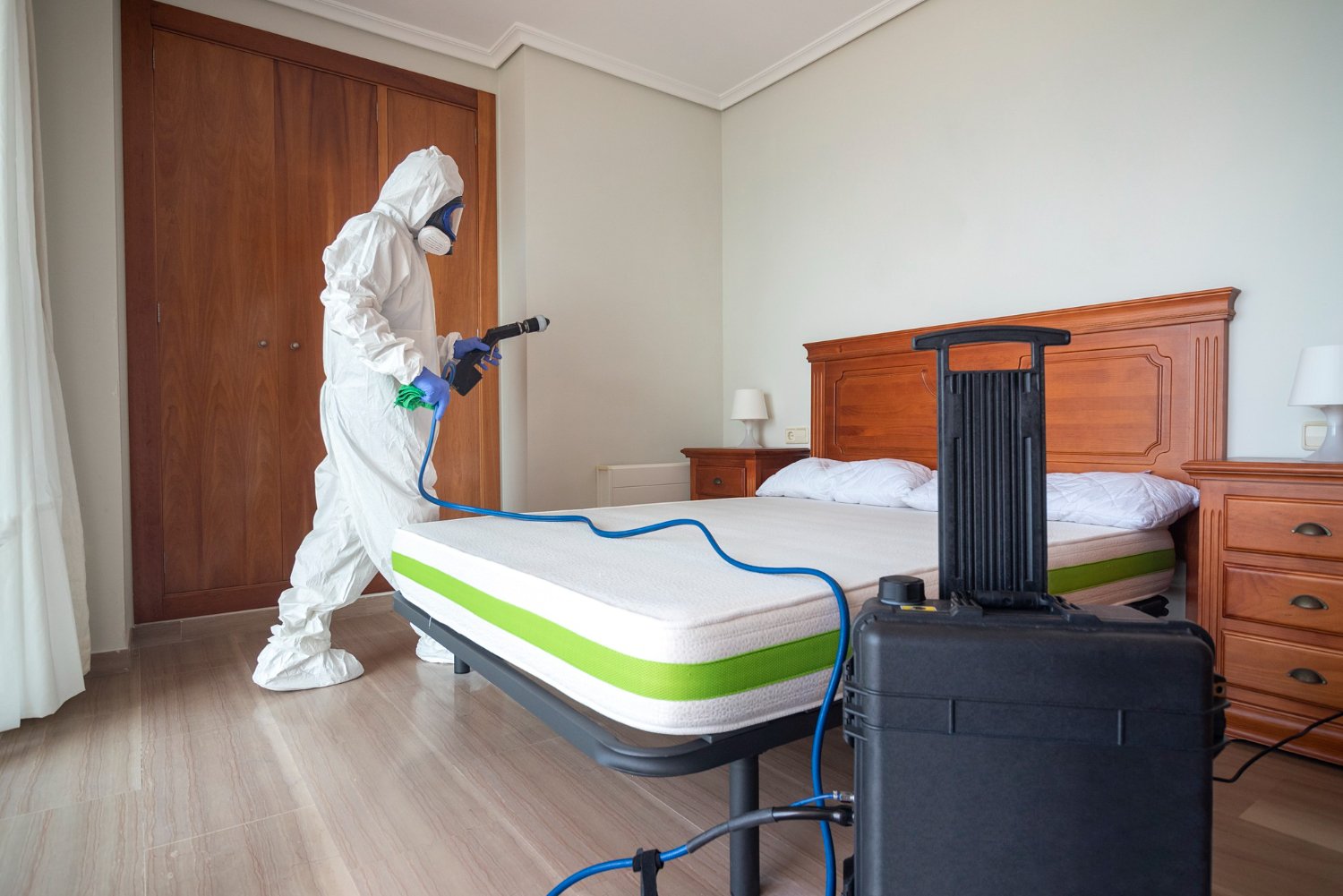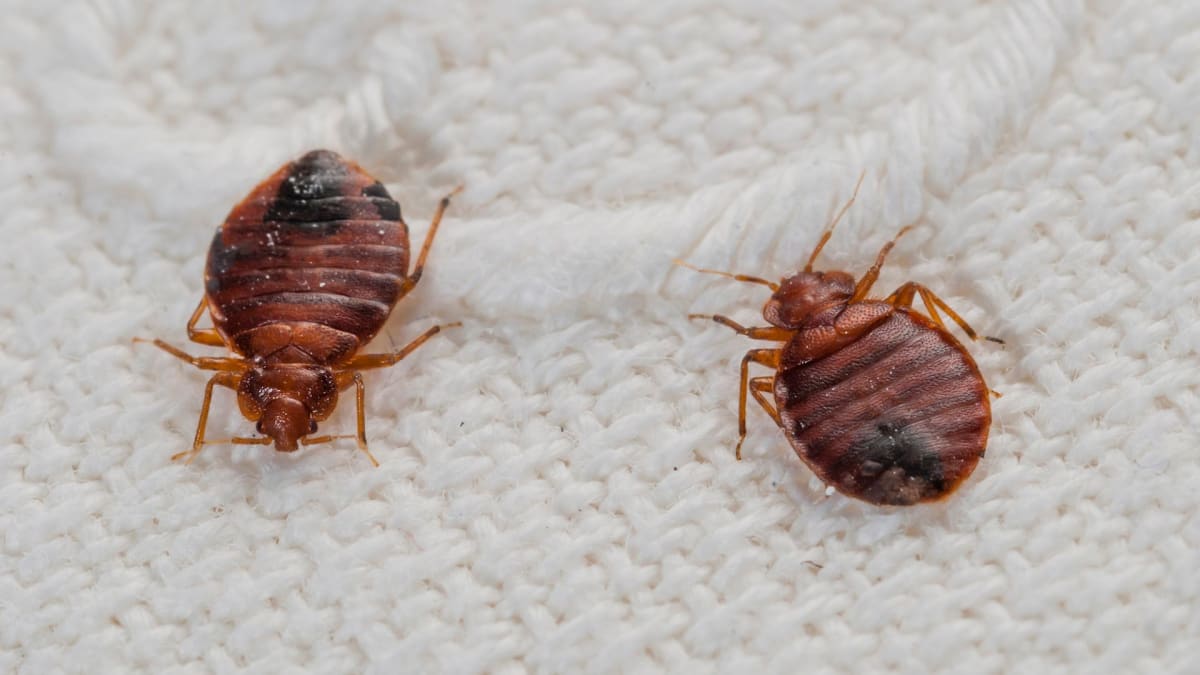Comprehending Various Therapy Options for Bed Insect Control
In the world of parasite monitoring, bed bugs present an unique challenge that calls for a well-balanced and strategic strategy for reliable control. Understanding the different therapy options offered is crucial in resolving problems immediately and thoroughly. From standard chemical therapies to cutting-edge warmth therapies and eco-friendly all-natural treatments, each approach features its very own set of benefits and factors to consider. In addition, incorporated insect monitoring approaches and the competence of specialist extermination services can give a holistic method to dealing with bed pest issues. As we browse through the nuances of these treatment options, the crucial hinge on choosing the most ideal approach that straightens with both efficacy and sustainability in bed pest control.

Chemical Treatments
Chemical therapies are an usual method utilized in the specialist control of bed insects. These therapies involve the application of insecticides to targeted locations where bed pests are present. Specialists commonly make use of a combination of residual insecticides, which continue to be reliable for an extensive period, and get in touch with pesticides, which act rapidly to eliminate bed insects upon straight get in touch with. The choice of pesticide and application technique might differ relying on the seriousness of the problem, the kind of setting being dealt with, and any kind of possible health issues for owners.
When implementing chemical treatments for bed bug control, it is crucial to follow all safety guidelines and guidelines to reduce dangers to humans, family pets, and the environment. Chemical therapies can be an effective tool in the comprehensive administration of bed insect invasions when used sensibly and in combination with other control techniques.
Warm Treatments

One of the primary advantages of warmth therapies is that they do not include making use of chemicals, making them a recommended option for those concerned about chemical direct exposure. Furthermore, warm therapies can be completed in a fairly short period, usually in a solitary day, decreasing interruption to the residents of the cured area.
However, it is critical to enlist the services of skilled experts when selecting heat treatments, as inappropriate use of heat can pose fire hazards and damage property. Overall, heat therapies stand for a safe, reliable, and environmentally friendly strategy to combating bed insect problems.
Natural Treatments
When looking for choice techniques for bed pest control, all-natural treatments provide a chemical-free method that can be effective in combating infestations. These oils can be weakened and splashed around bed frames, baseboards, and various other areas where bed bugs might conceal. While natural treatments can be efficient, it's important to keep in mind that they might call for repeated applications and thoroughness to accomplish successful bed bug control.
Integrated Parasite Monitoring
Considering the varied techniques offered for bed insect control, Integrated Bug Monitoring (IPM) stands out as an extensive technique that combines various techniques to effectively attend to pest problems. IPM focuses on lasting avoidance and monitoring of bugs via a mix of strategies such as therapy, tracking, and assessment.
One key facet of IPM is the emphasis on accurate recognition of the bug types and their details habits. By comprehending the biology and habits of bed insects, parasite control professionals can develop targeted techniques to remove infestations. In addition, IPM promotes making use of non-chemical control approaches, such as securing crevices and fractures, vacuuming, heat therapies, and using bed mattress encasements.
In addition, IPM supporters for the judicious application of chemicals as a last hope, focusing on using low-toxicity products and integrated strategies. Routine monitoring and follow-up inspections are important components of IPM to ensure the effectiveness of the therapy and avoid reinfestations. On The Whole, Integrated Bug Management offers a sustainable and all natural approach to bed insect control, advertising ecologically accountable methods while properly handling pest populaces.
Specialist Extermination Providers

Professional pest control experts utilize a variety of techniques to combat bed pest invasions, including the application of pesticides, warm treatments, vacuuming, and heavy steam therapies. They are furnished with the needed devices and tools to get to covert locations where bed insects may stay, such as cracks, crevices, and wall surface voids.
Furthermore, expert elimination services commonly include numerous check outs to ensure that all bed pests bed bug treatment cost chicago and their eggs are totally gotten rid of - bed bug service chicago. This detailed strategy helps prevent reinfestations and makes sure long-lasting control of bed bugs in the treated location
In addition, pest control men can offer valuable assistance on preparing the infested area prior to therapy and offer referrals for avoiding future bed pest invasions. Overall, expert extermination solutions offer a detailed and efficient solution for dealing with bed bug problems.
Conclusion
In verdict, various therapy options for bed pest control consist of chemical treatments, heat therapies, all-natural solutions, integrated insect management, and professional extermination services. Each alternative has its own benefits and constraints, so it is necessary to very carefully think about the specific circumstances of the problem prior to choosing a therapy approach. Efficient bed insect control needs an extensive technique that might include a mix of these therapy alternatives to effectively get rid of the infestation.
Chemical treatments can be a powerful tool in the thorough administration of bed pest problems when utilized judiciously and in conjunction with other control approaches.
Made use of in professional bed bug control, heat treatments supply a non-chemical remedy for eradicating bed insect problems properly. These oils can be thinned down and splashed around bed frames, walls, and other areas where bed insects may conceal.In verdict, various therapy choices for bed bug control include chemical treatments, warmth therapies, natural remedies, integrated bug administration, and professional elimination services. Effective bed pest control calls for a comprehensive technique that may include a mix of these therapy alternatives to efficiently get rid of the infestation.